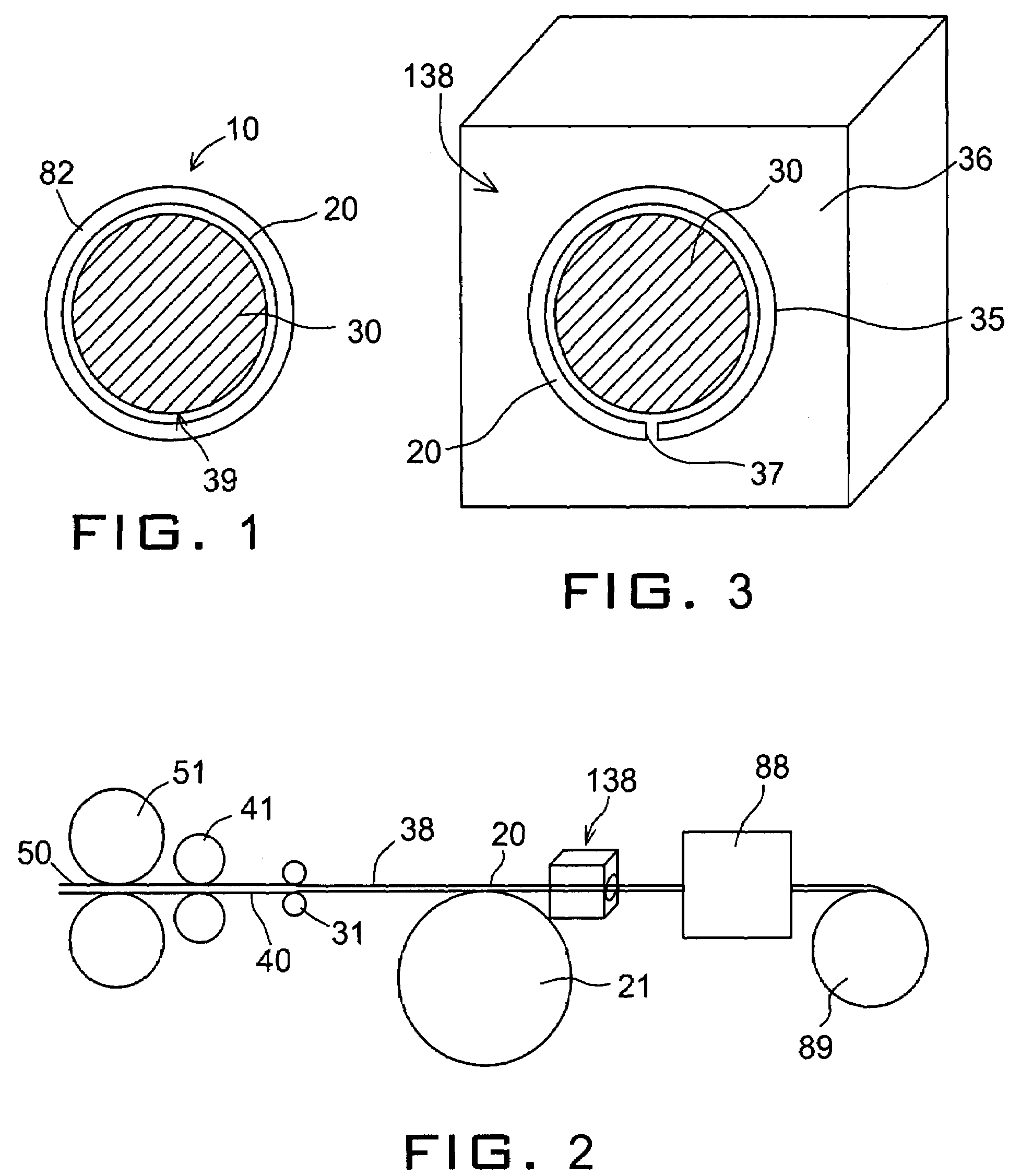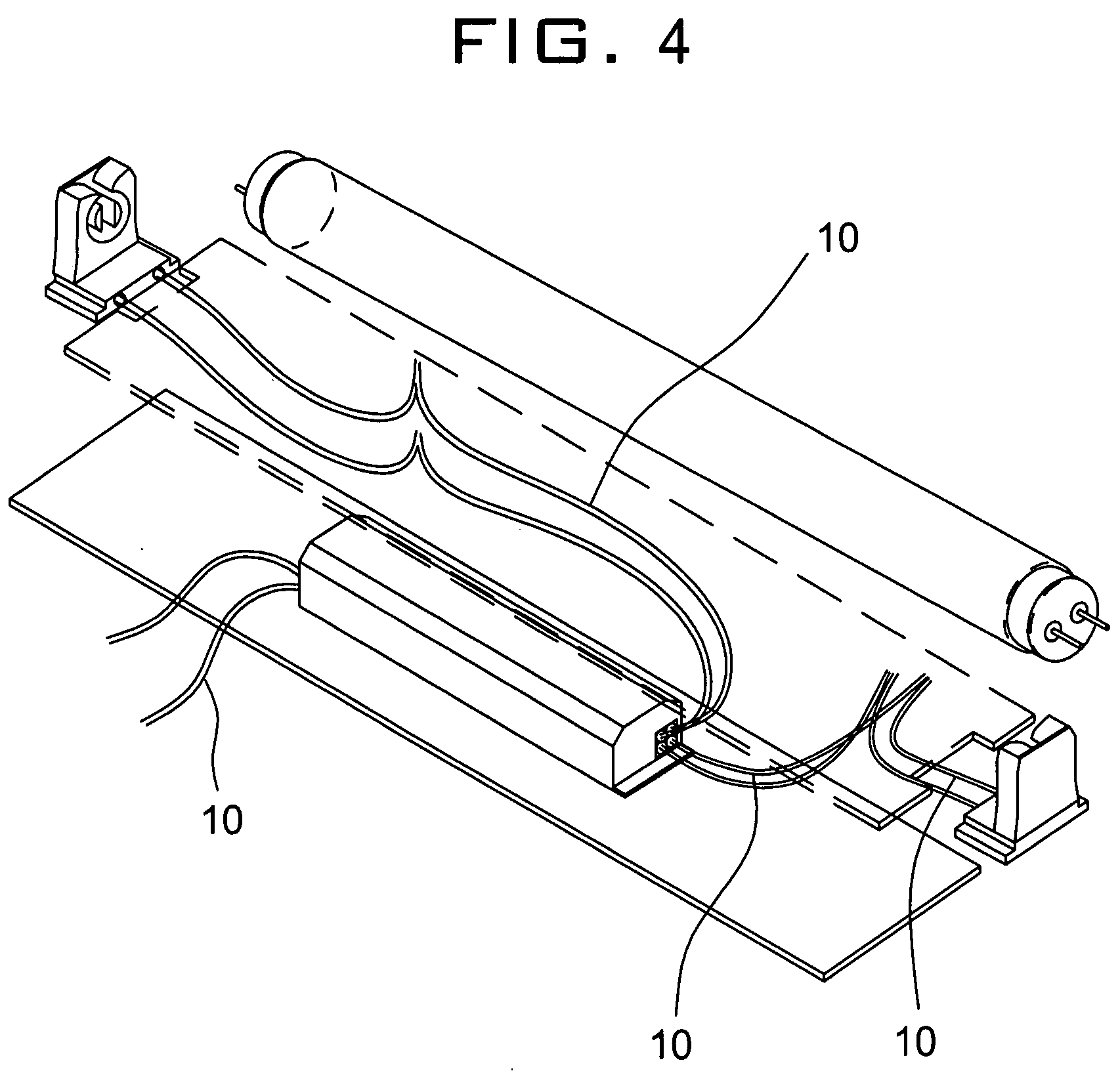Copper clad ballast wire
a ballast wire and copper technology, applied in the direction of reducing the size of cables/conductors, conductors, lighting and heating apparatus, etc., can solve the problems of significant safety and reliability problems, heavy weight, and wires that could be broken, so as to save material costs, eliminate the waste of excessive pure copper, and carry up safely
- Summary
- Abstract
- Description
- Claims
- Application Information
AI Technical Summary
Benefits of technology
Problems solved by technology
Method used
Image
Examples
Embodiment Construction
[0021]With reference to FIG. 1, ballast lead wire 10 has a core 30 of aluminum, stainless steel, or other iron core and has a cladding 20 made of copper. The installation layer 82 protects the wire 10. The copper clads around the steel and may optionally have a seam 39 the seam 39 prevents overlap and waste of copper.
[0022]In a first method, the copper is added when the lead wire is almost at the final diameter. As seen in FIG. 2, the production process diagram begins with large diameter core wire 50 that passes through large rollers 51 and intermediate rollers 41 providing a medium diameter wire. Instead of large diameter rollers 51 and intermediate diameter rollers 41, the wire can be drawn through a die also. Intermediate diameter wire 40 can further be drawn or rolled by rollers 31 into the almost final size core wire 38. The almost final size core wire 38 is only slightly larger than the final size core wire 30. A spool of copper cladding 21 unwinds copper cladding 20 that pass...
PUM
| Property | Measurement | Unit |
|---|---|---|
| thickness | aaaaa | aaaaa |
| length | aaaaa | aaaaa |
| electronic current | aaaaa | aaaaa |
Abstract
Description
Claims
Application Information
 Login to View More
Login to View More - R&D
- Intellectual Property
- Life Sciences
- Materials
- Tech Scout
- Unparalleled Data Quality
- Higher Quality Content
- 60% Fewer Hallucinations
Browse by: Latest US Patents, China's latest patents, Technical Efficacy Thesaurus, Application Domain, Technology Topic, Popular Technical Reports.
© 2025 PatSnap. All rights reserved.Legal|Privacy policy|Modern Slavery Act Transparency Statement|Sitemap|About US| Contact US: help@patsnap.com



